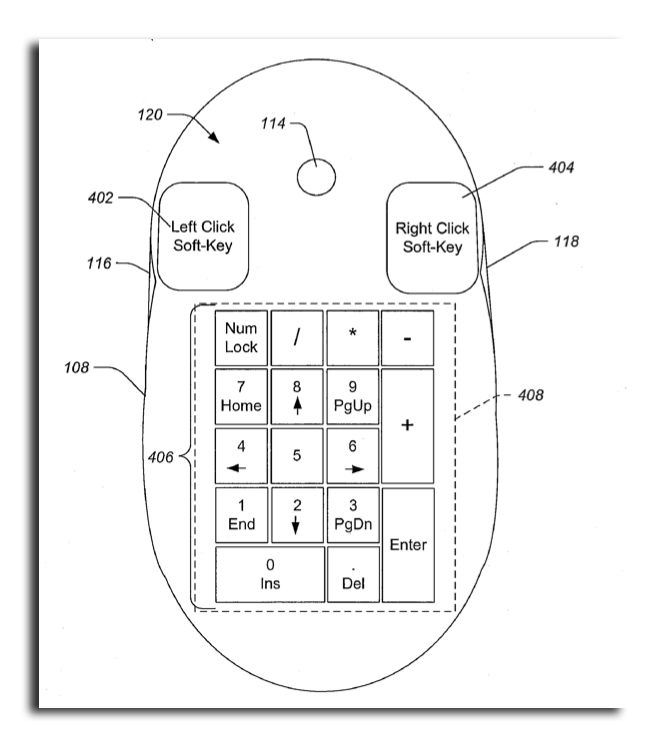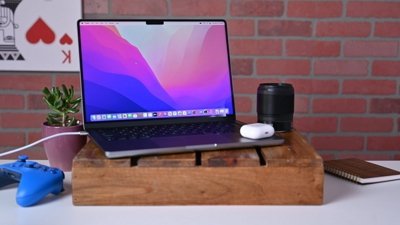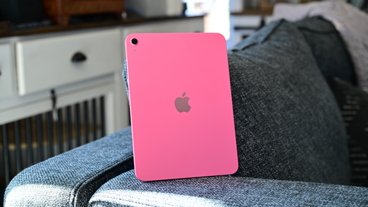The new Magic Mouse was revealed this week in a patent application published by the U.S. Patent and Trademark Office entitled "Computer Input Device Including a Display Device." Discovered by AppleInsider, it shows a mouse with a display on top that would be able to display information or allow contextual input options.
Apple's filing notes that the usability of a computer might become easier through input devices that are "more communicative" to the user. It also notes that the addition of a screen could make a device more "aesthetically pleasing," by allowing users to change the look of it by customizing what is displayed on the screen.
The proposed invention would provide "observable data" to a user through the input device itself. The image could even be displayed on the back of a curved surface, like a mouse, by projecting the image onto an outer surface of "collimated glass."
The display on the mouse would change according to what the user may be doing on their Mac. As an example, the application describes displaying a number of icons for quickly selectable options when a user is running Apple's Pages word processing application. Switching over to the spreadsheet software Numbers would reconfigure the buttons on the screen to allow for commands in that respective application.
In another example, the mouse displays a virtual depiction of a traditional number pad, commonly found on a full-size keyboard. With this, users could quickly input numbers right from their mouse using its touch-sensitive back panel.
The application notes that the dynamic touch-display input method could be employed on other devices like a keyboard, or even a mobile device like an iPhone or iPod touch.
In one illustration, an iPhone is shown with the top third of its screen occupied by the handset's traditional applications like SMS, Calendar and Photos. But the bottom two-third of the display are occupied by a trackpad-like area, and below that is a virtual clickable surface for using a cursor to select objects on a traditional computer. The iPhone sketch also lacks a home button on the hardware.
The patent application revealed this week is credited to Gordie Freeman, Jacob Farkas, and Toby Charles Wood Patterson. Apple first filed for the proposed invention in July of 2009.
Apple introduced its multi-touch Magic Mouse — without a display on it, of course — in 2009. The wireless mouse lacks any physical buttons, but brings multi-touch gestures, such as two-finger scrolling, to the pointer. Previously, those types of gestures were only capable on an iPhone, or a multi-touch trackpad on a MacBook.
The effort to add multi-touch input to Apple's entire line of products continued in July 2010, when the Magic Trackpad was released. The flat trackpad surface offers input similar to a MacBook on a desktop Mac.
As for controlling a device with an iPhone, iPod touch or iPad, Apple already allows that with its own free Remote application. That software, available on the App Store, allows iOS users to control their Apple TV wirelessly from anywhere in their home.
 Neil Hughes
Neil Hughes








-m.jpg)





 William Gallagher
William Gallagher
 Stephen Silver
Stephen Silver
 Charles Martin
Charles Martin
 Christine McKee
Christine McKee
 Amber Neely
Amber Neely
 Malcolm Owen
Malcolm Owen











63 Comments
So how long before a non Apple device is controlled by something like this made by Apple?
Too much clutter for a mouse- sounds too Kensingtonish.
However I could see this for the magic trackpad- makes perfect sense.
Mobile mouse app works fine for me right for now.
Sounds great, but I'll have to change my batteries every week instead of every month.
This has been my main futuristic request for several years now for notebooks, where it makes a lot more sense. This is inevitable at some point.
This has been my main futuristic request for several years now for notebooks, where it makes a lot more sense. This is inevitable at some point.
The mouse mat itself could become the perfect input device for a MacBook ...